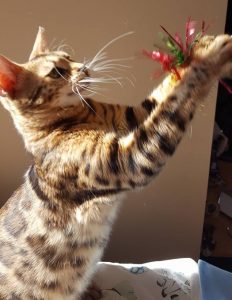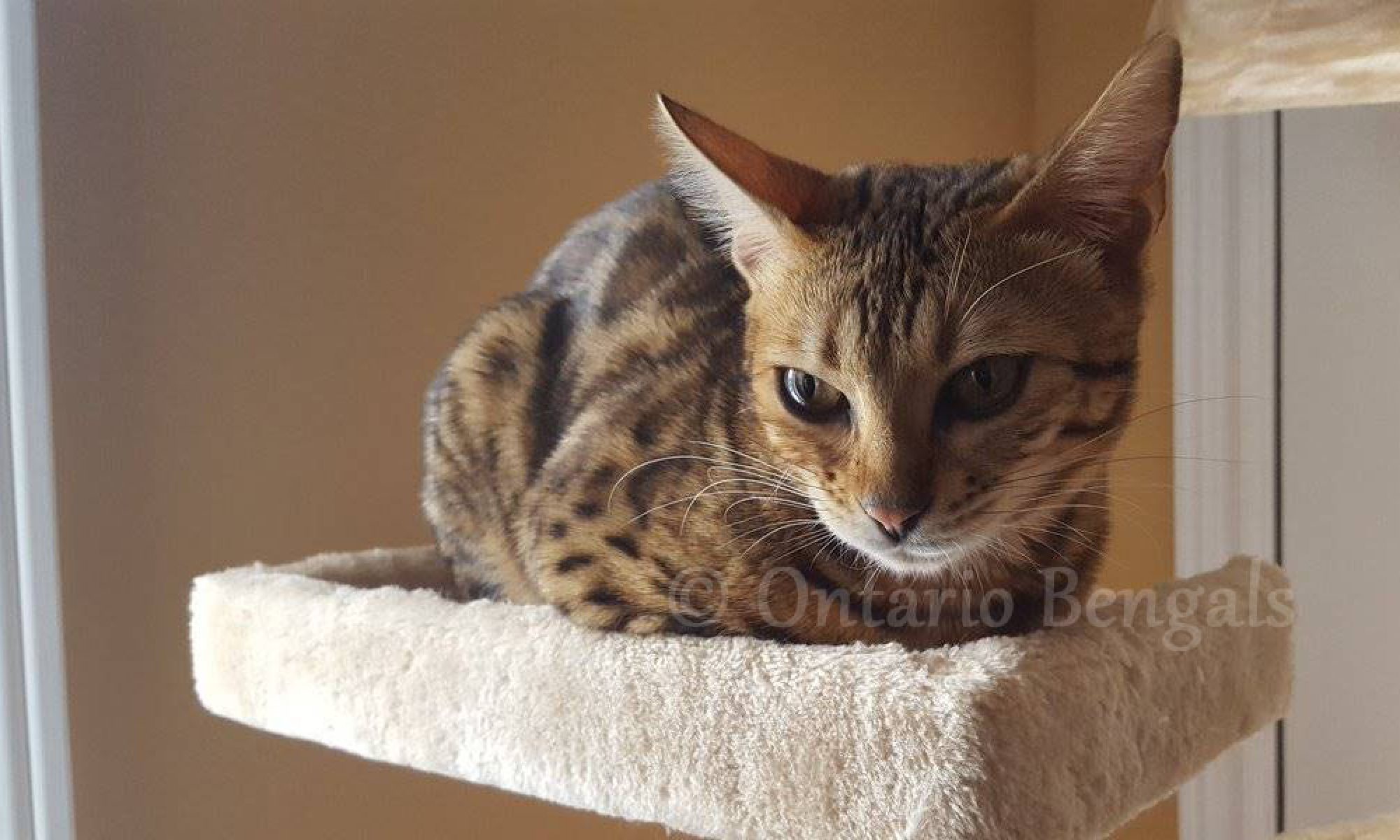Cats could be considered nature’s perfect hunter; stealthy, agile, graceful, high jumps, fast movement, incredible athletes capable of performing amazing feats.
 Bengal cats are everything you would imagine that cat to be. Athletic, muscular, agile, high jumper, fast movement. Bengal not only look like they belong in the jungle; they look like they would rule there. Bengals are, on average, better climbers, jumpers and generally more athletic than other breeds of domestic cats.
Bengal cats are everything you would imagine that cat to be. Athletic, muscular, agile, high jumper, fast movement. Bengal not only look like they belong in the jungle; they look like they would rule there. Bengals are, on average, better climbers, jumpers and generally more athletic than other breeds of domestic cats.
Coat
The first thing that most people notice about the Bengal Cat is their amazing coat. It’s beautiful, soft, sleek, it can glitter – it’s a wonder! They shed less than most other domestic cats and some people allergic to cats are not allergic to Bengals.
Like most cats they do not need to be bathed (though Bengals have been known to play in water!)
Hypo-Allergenic
Are they Hypo-Allergenic? This term comes around a lot with Bengals and there are definitely people who might be allergic to cats in general but are not allergic to Bengals. As a breed, Bengals do not shed much, they have a different style of coat which is soft and silky and are often compared to mink. Since Hypo-Allergenic means that they cause fewer allergic reactions the answer is yes; however, that doesn’t mean that no one is allergic to a Bengal. Your best bet is to go and visit a house with Bengals and spend some time there. Most Catteries will welcome visitors so test out any allergies for yourself.
Size
Male Bengals average 12-14 pounds; however, they can get to 16 or even 18 pounds.
Female Bengals average 8-12 pounds; however, you can see smaller females as low as 6 pounds.
Personality
Bengals have a lot of personality and are lively, intelligent and interactive cats. They, typically, don’t ignore you nor are they dull cats. They will be an active part of your family.
Read more here: Bengal Personality
Common Genetic Diseases
Bengals are generally healthier than most pure breed cats. This is due to them being a relatively newer breed with lots of new blood from other breeds and the wild Asian Leopard Cat. That being said – watch out for the following diseases:
HCM: Hypertrophic Cardiomyopathy. This is a genetic heart disease. while there is no genetic test for it, a lot of breeders do regular testing of their breeding cats to ensure that if they show signs of HCM they stop breeding those cats.
PRA: Progressive Retinal Atrophy, a degenerative eye disease which causes blindness. There is a genetic test for this disease – ensure your breeder has a clean bill of health.
PKD: Polycystic Kidney Disease, a progressive kidney disease which, also can be tested for – ensure your breeder has a clean bill of health.
PK Def: Pyruvate Kinase Deficiency, not to be confused with PKD, this impairs red blood cells and causes anemia. Once again this can be tested for – ensure your breeder has a clean bill of health.

 Bengal cats are everything you would imagine that cat to be. Athletic, muscular, agile, high jumper, fast movement. Bengal not only look like they belong in the jungle; they look like they would rule there. Bengals are, on average, better climbers, jumpers and generally more athletic than other breeds of domestic cats.
Bengal cats are everything you would imagine that cat to be. Athletic, muscular, agile, high jumper, fast movement. Bengal not only look like they belong in the jungle; they look like they would rule there. Bengals are, on average, better climbers, jumpers and generally more athletic than other breeds of domestic cats.